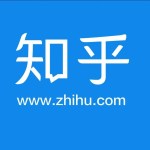How-to & Go-to Guides of All Things Around China.
Huawei, a household name synonymous with technological prowess, has emerged as a global leader in information and communications technology (ICT) and smart devices. From its humble beginnings in 1987 to its current status as a trillion-dollar enterprise, Huawei’s journey reflects China’s rapid rise in innovation. This article delves into Huawei’s core business, technological breakthroughs, global impact, and enduring legacy, optimized for SEO with keywords like “Huawei company overview,” “Huawei 5G technology,” and “Huawei global influence.”
1. Foundational Years: From Telecommunications to Global Dominance
Founded by Ren Zhengfei in 1987 as a distributor of PBX switches, Huawei quickly pivoted to R&D, developing its first indigenous telecom equipment in 1994 . By 2003, it launched its consumer business, marking a strategic shift toward smartphones and IoT devices.
Key Milestones
- 2012: Huawei surpassed Ericsson to become the world’s largest telecom equipment provider.
- 2019: Despite U.S. sanctions, Huawei shipped 240 million smartphones, solidifying its position as the second-largest global smartphone brand .
- 2024: The company reported ¥862.1 billion ($121 billion) in revenue, with consumer devices (339 billion) and smart car solutions (26.4 billion) driving growth .
Global Footprint
With 208,000 employees across 170 countries, Huawei serves over 3 billion people through its telecom networks, cloud services, and smart devices . Its European operations, spanning 30+ countries, are pivotal to its 5G and AI initiatives, with Germany and Spain recently relaxing restrictions on Huawei’s 5G infrastructure .
2. Technological Breakthroughs: Leading the AI and 5G Revolution
Huawei’s R&D investment, totaling $23.8 billion in 2022, fuels its innovation in critical domains:
5G Leadership
- Patent Dominance: Holding 18% of global 5G patents, Huawei leads in network equipment and enterprise solutions . Its Smart 8T8R technology reduces energy consumption by 15% for operators like Indonesia’s Telkomsel .
- Global Deployments: Huawei has deployed 5G networks in 170+ countries, including Nigeria’s rural areas via its RuralStar solution, bridging connectivity gaps .
HarmonyOS & Ascend AI
- HarmonyOS: The distributed operating system powers 320 million devices, enabling seamless connectivity across smartphones, wearables, and smart homes . Its AI-driven features, like cross-device collaboration, challenge Apple’s ecosystem .
- Ascend AI Chips: Designed for high-performance computing, Ascend chips underpin Huawei’s AI cloud services, which grew 6x in 2024 . These chips are used in medical diagnostics and industrial automation, such as Qingdao’s smart city project .
Green Technology
Huawei’s AI-Powered Energy Saving solutions reduce carbon emissions for clients like MTN Group, supporting Africa’s goal of 95% rural network coverage by 2025 . Its data centers achieve 78% energy efficiency, aligning with global sustainability goals .
3. Global Impact: From Rural Connectivity to Urban Innovation
Digital Inclusion
- TECH4ALL Initiative: Partnering with UNESCO and NGOs, Huawei provides digital skills training to 6,300+ Europeans and African communities, using mobile labs like DigiTruck .
- Tech4Nature: In collaboration with IUCN, Huawei deploys AI and 5G to monitor coral reefs in Mauritius and protect biodiversity in Spain’s Sierra Nevada .
Smart City Ecosystems
Huawei’s City Intelligence Platform powers projects like Guangzhou’s Smart Port and Dubai’s AI-Driven Traffic Management, integrating IoT and big data for efficient urban governance .
Automotive Innovation
- HiCar Solution: Partnering with Audi and Chery, Huawei’s in-car systems offer L4 autonomous driving and seamless smartphone integration, set to launch in Europe by 2026 .
- 问界 Series: Co-developed with SERES, these electric vehicles dominate China’s premium EV market, combining Huawei’s AI and battery tech .
4. Challenges and Resilience: Navigating U.S. Sanctions
Since 2019, U.S. sanctions have restricted Huawei’s access to advanced semiconductors and Google services. Despite this, Huawei has:
- Domestic Substitution: Replaced 13,000+ components with Chinese alternatives, including 7nm Kirin chips for Mate 70 series .
- Market Diversification: Shifted focus to enterprise and cloud services, with overseas cloud revenue growing 50% in 2024 .
- Ecosystem Rebuilding: HarmonyOS now supports 2.2 million apps, reducing reliance on Android .
5. Future Vision: Beyond 5G to 6G and AI-Driven Society
6G Research
Huawei leads 6G standardization, targeting 1 Tbps speeds and 0.1ms latency for industries like autonomous manufacturing . Its 6G Testbed in Wuhan is collaborating with European universities to accelerate R&D.
AI for All
- 昇腾 AI Cloud: Offers cost-effective AI training for SMEs, with applications in healthcare diagnostics and agricultural yield optimization .
- OpenHarmony Ecosystem: Invites developers to build industry-specific OS versions, such as Hongmeng PC OS, challenging Windows and macOS .
Leadership Philosophy
Ren Zhengfei, Huawei’s visionary founder, emphasizes long-term resilience: “Huawei is a marathon runner, not a sprinter. We focus on sustainable innovation, not short-term gains” . His leadership has fostered a culture of adaptability, evident in Huawei’s post-sanction recovery.
6. How to Experience Huawei’s Innovation
Visit Huawei’s Global HQ
- Shenzhen Campus: Explore the Visitor Center, showcasing Huawei’s 5G, AI, and smart home solutions. Nearby attractions like Dafen Oil Painting Village offer cultural immersion .
- Europe Centers: The Huawei European Cyber Security Center in Brussels hosts workshops on 5G security and IoT best practices.
Engage with Huawei Products
- Consumer Devices: Try the HUAWEI Mate 60 Pro (with satellite calling) or FreeBuds 6 (AI noise cancellation) at flagship stores in Beijing or London .
- Enterprise Solutions: Attend Huawei Connect 2025 in Paris to witness AI-driven smart city and industrial solutions .
Sustainability Initiatives
- Green Campus Tours: Join guided tours of Huawei’s solar-powered campuses in Dongguan, learning about its zero-carbon operations.
Conclusion: A Beacon of Chinese Innovation
Huawei’s story is a testament to China’s technological renaissance. From revolutionizing telecom networks to spearheading AI and 5G, Huawei challenges global norms while advocating for inclusive innovation. As it navigates geopolitical headwinds, its focus on R&D, sustainability, and user-centric design ensures its relevance in the Age of Intelligence.
Explore Huawei’s latest innovations on Huawei.com or plan a tech-focused trip to China with our Shenzhen Innovation Itinerary. 🚀
数据来源:
- 华为 2024 年财报 (Huawei 2024 Annual Report)
- 中国信息通信研究院 (China Academy of Information and Communications Technology)
- 国际电信联盟 (International Telecommunication Union)








